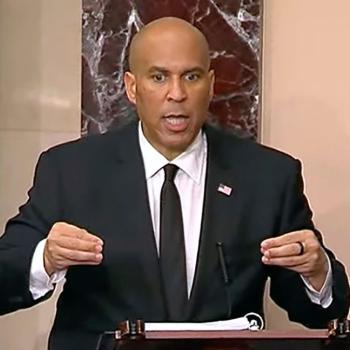Imagine what your life would be like if you could be an EcoPreacher taking part in God’s work to heal our planet – right from the pulpit. What if your parishioners were inspired by your preaching to address the most pressing environmental concerns of our time? Imagine hearing your parishioners actually thank you for preaching about protecting our planet. How about discovering a new dimension to your preaching that opens a whole new world of perspectives, creative ideas, and inspiration for reaching people with God’s Word?

17 Ideas for Being an EcoPreacher
Here are 17 ideas excerpted from my book Creation-Crisis Preaching: Ecology, Theology and the Pulpit (Chalice Press, 2015) for helping you find a whole new perspective for engaging the Bible that deepens and expands your faith and the faith of your listeners:
- Walk. Walk the grounds around the church building. Consider your surroundings, which include the land you are sitting or standing on, the plants near you, the air you are breathing, other living creatures perceptible to your senses. Who are your biotic neighbors? Also consider the houses, buildings, businesses, factories, and other human-made “neighbors,” etc. Reflect on the interactions that are occurring between you and these multi-faceted surroundings. Are they harmful? Beneficial? Neutral? How do your natural surroundings affect your physical or spiritual existence? Your feelings? Your values?
- Look at a topographical map where the congregation is located. Google Maps, Google Earth, or other online mapping services are free and can reveal a bird’s eye view of your setting. Notice the local waterways, landscape features (mountains, desert, beach, green spaces, etc.). How are they are disrupted, connected to or otherwise intersecting with human civilization?
- Talk with members of your congregation to get a sense of “who” (in the expanded ecological sense) are their neighbors, and who has been beaten and lies along side of the road. Who are “the least of these” (Matthew 25:40) in need of attention and care?
- Talk with other clergy to learn the history of “neighbor-relations” in the community. What stories do they tell about neighbors helping each other (or not)? Do any of them have share your interest in environmental issues so that you may collaborate on preaching ideas?
- Talk with community members to hear their stories about environmental issues that are part of the community’s history. Were there any grassroots efforts to clean up blighted areas? Protest pollution? Confront toxic dumping? What was successful? What work remains to be done?
- Talk with local health care workers such as doctors and nurses to find out what the key public health issues are in the community. There are often environmental connections (asthma, obesity, cancer, and depression, for example, are all exacerbated by deleterious environmental conditions such as air pollution, radioactive waste, waste incineration, etc.).
- Meet with local chapters of environmental groups such as Sierra Club, Clean Air Council, Interfaith Power and Light and grassroots activist groups to find out what environmental issues are facing your community. Ask how local houses of worship can be helpful in their work.
- Talk with local naturalists, master gardeners, fishermen, hunters, farmers, beekeepers, or others whose work involves the natural elements. Ask what changes they have observed in animal, plant, insect, fish or other biotic communities in the last few decades.
- Search for clean-energy businesses in your community such as wind farms, solar farms, geothermal companies, etc. Inquire as to how they see their work in relation to the community and the planet.
- Meet with your elected officials. Ask them who they consider “the least of these,” or those most vulnerable among their constituents. What are their main environmental concerns regarding their watersheds, land, forests, and biotic communities within their territories?
- Preach as one of the “nature” characters in a biblical text (e.g., preaching as the fig tree whom Jesus causes to wither, preaching as the stones about to cry out along the “Palm Sunday Road,” preaching as the birds or lilies from Jesus’ parable).

The author, Leah D. Schade, preaching at R. B. Winter State Park in Pennsylvania.
- Bring in or at least show a picture of an actual object of nature mentioned in a biblical text (tree stump, water, flowers, rocks, etc.).
- Preach a sermon series on Jesus’ parables about or interactions with Creation.
- Provide time in a sermon for listeners to share about their favorite places in Creation, or particular aspects of Creation. This not only allows them to hold an image in their mind, but helps to foster a relationship between the listener and some aspect of Creation within the context of preaching.
- Tell the story of a local natural habitat, framed within a biblical context or concept. Incorporate Earth’s story with the biblical story, and connect it with the listeners’ stories.
- Do a sermon series on features of nature in the Bible, such as rivers, mountains or valleys.
- Preach outside. This is a natural way to de-center the anthropocentrism of the congregation and directly address the larger “congregation” of the Earth community.
What ideas do you have for greening your preaching? Post a reply to share what has worked for you in bringing Creation-care to the forefront of your preaching.
Looking for ways to incorporate Earth-care into a children’s sermon? Click here. And here are ideas for Welcoming Children into God’s Creation.
Want to see some examples of preaching that incorporates Creation-care? Try these links:
Falling Off the Bike: An Earth Day Sermon
Is Earth Worth Dying For? A Reflection on the Earth Martyrs
Jonah, the Ninevites, and Climate Change

Leah D. Schade is the Assistant Professor of Preaching and Worship at Lexington Theological Seminary (Kentucky) and author of the book Creation-Crisis Preaching: Ecology, Theology, and the Pulpit (Chalice Press, 2015).
You can follow Leah on Twitter at @LeahSchade, and on Facebook at https://www.facebook.com/LeahDSchade/.













